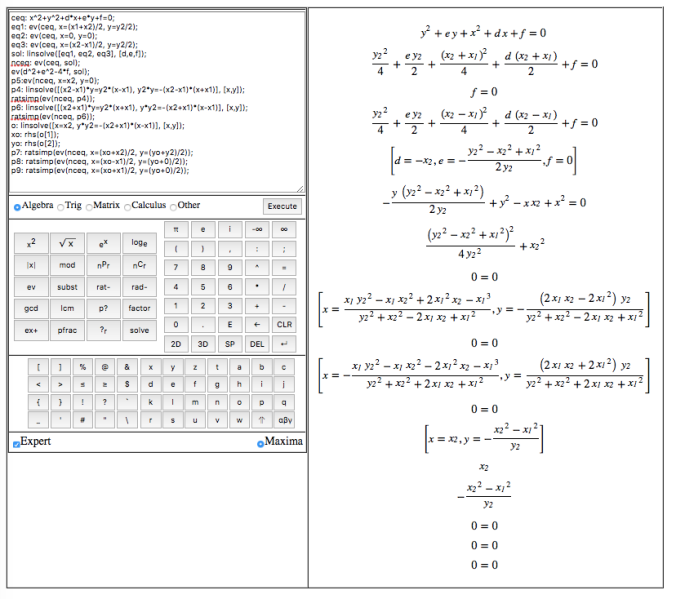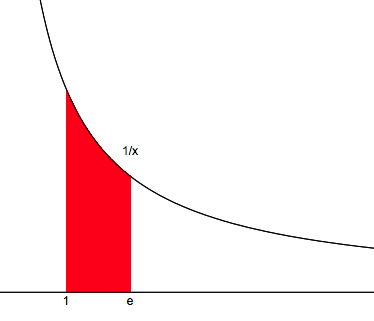Feuerbach’s Nine-Point Circle Theorem states that a circle passes through the following nine significant points of any triangle can be constructed:
1. The midpoint of each side of the triangle
2. The foot of each altitude
3. The midpoint of the line segment from each vertex of the triangle to the orthocenter
Let’s prove it with the aid of Omega CAS Explorer.

Step-1 Set up the circle equation:
is a circle centered at with radius
provide (2) is positive.
Step-2 Find d,e,f using p1, p2, p3:
ceq: x^2+y^2+d*x+e*y+f=0;
eq1: ev(ceq, x=(x1+x2)/2, y=y2/2);
eq2: ev(ceq, x=0, y=0);
eq3: ev(ceq, x=(x2-x1)/2, y=y2/2);
sol: linsolve([eq1, eq2, eq3], [d,e,f]);
The new circle equation is
nceq: ev(ceq, sol);
,
Evaluate (2)
ev(d^2+e^2-4*f, sol);
,
always positive for .
Step-3 Show p5, p6, p4 are on the circle:
p5:ev(nceq, x=x2, y=0);
p4: linsolve([(x2-x1)*y=y2*(x-x1), y2*y=-(x2-x1)*(x+x1)], [x,y]);
ratsimp(ev(nceq, p4));
p6: linsolve([(x2+x1)*y=y2*(x+x1), y*y2=-(x2+x1)*(x-x1)], [x,y]);
ratsimp(ev(nceq, p6));
Step-4 Find the orthocenter
o: linsolve([x=x2, y*y2=-(x2+x1)*(x-x1)], [x,y]);
Step-5 Show p7, p8, p9 are on the circle:
xo: rhs(o[1]);
yo: rhs(o[2]);
p7: ratsimp(ev(nceq, x=(xo+x2)/2, y=(yo+y2)/2));
p8: ratsimp(ev(nceq, x=(xo-x1)/2, y=(yo+0)/2));
p9: ratsimp(ev(nceq, x=(xo+x1)/2, y=(yo+0)/2));

This post is essentially my presentation at 21st Conference on Applications of Computer Algebra, July 20-23, 2015, Kalamata, Greece.






